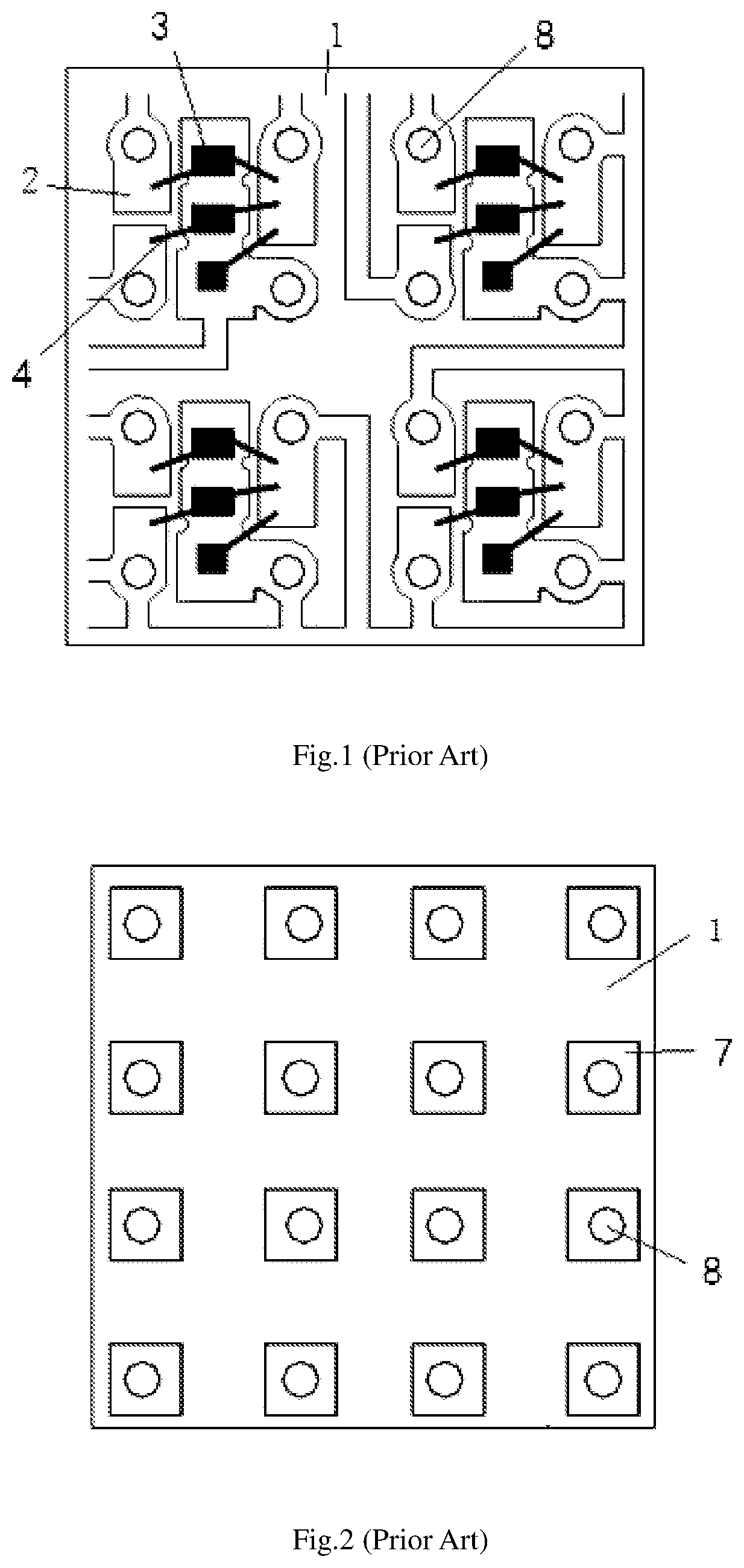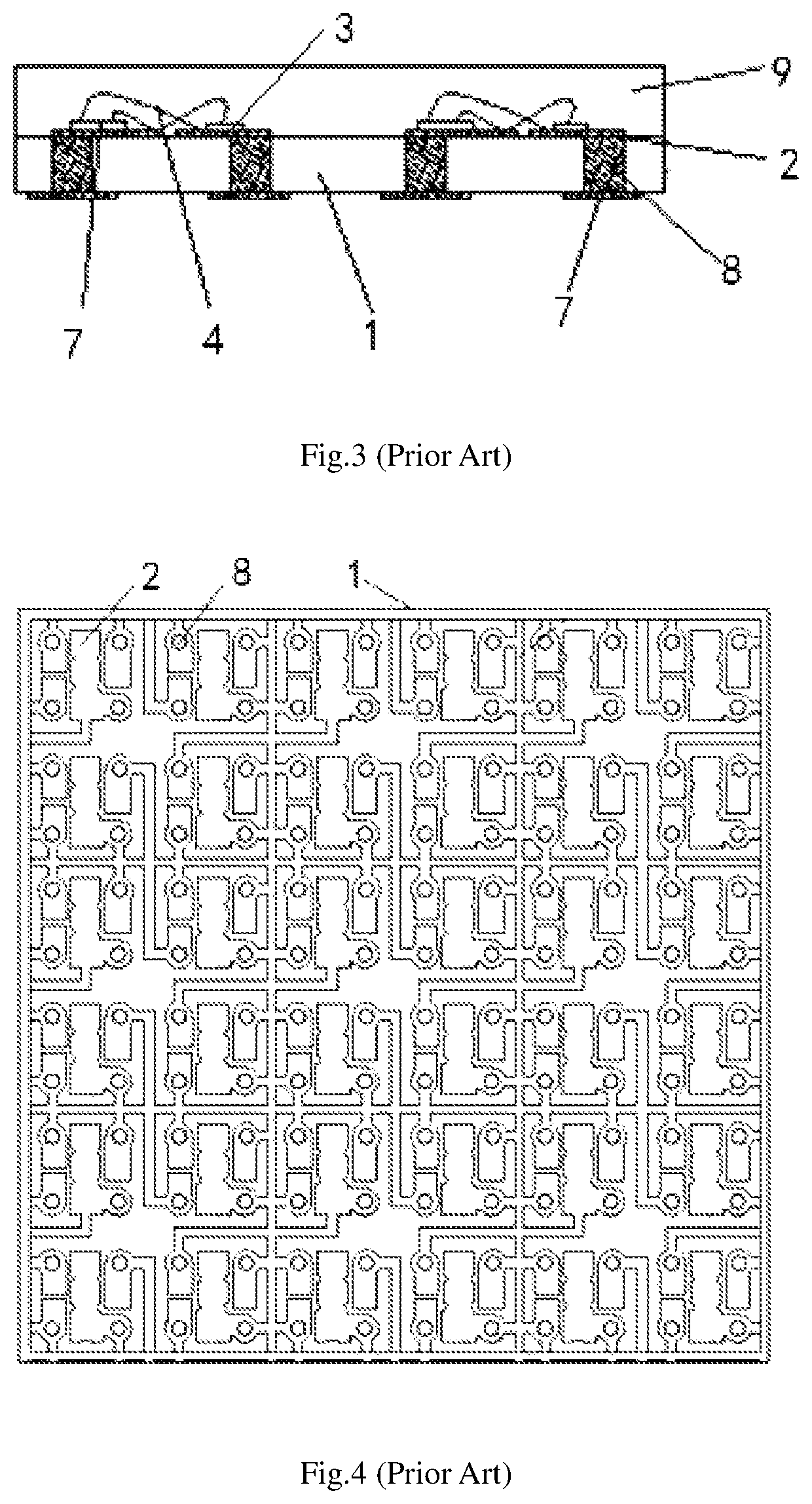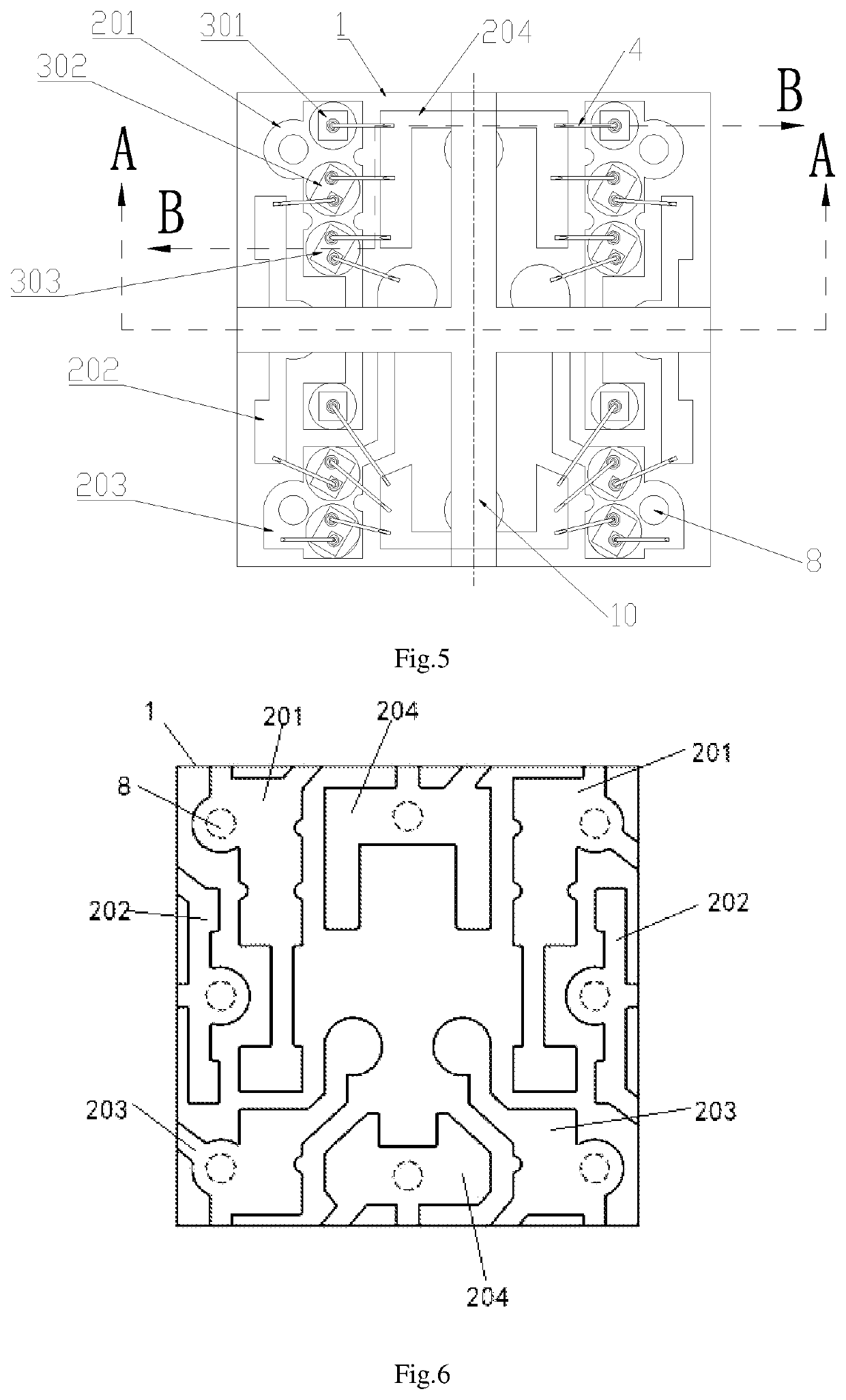Thus, the light emitting diodes (LEDs) were developed, but the application of the LEDs had not gained much attention later.
But its brightness limits the use under natural light, so an
LED display (screen) is developed, which has the characteristics of large viewing angle, high brightness, and
colorfulness.
However, as the pixel
pitch of the
LED display screen is reduced, the number of packaging devices per unit area is increasing, which makes the packaging difficulty increase exponentially.
As the number of packaging devices per unit area increases, the mounting
workload and the mounting difficulty will be also greatly increased.
However, COB packaging has not been widely used in the field of
LED display screens so far.
The reason is that the panel ink color of COB packaging is not well controlled.
When a lamp is not turned on, the surface ink color is inconsistent.
The center value difference or the ink difference of substrates of different batches of chips lead to
color difference, and the entire screen consistency is poor.
Besides, the chip is directly mounted on a circuit board and lacks of protection, so that the reliability cannot be guaranteed, and the maintenance cost of an ineffective LED chip is high.
First, there are too many pin bonding-pads on the back surface of the substrate. The existing small-
pitch display screens mainly use 1515, 1010, 0808, 0606, 0505 and other types of packaging devices, all of which are 4-pin devices, one anodes or cathodes of red chips, green chips and blue chips are connected in parallel through a common-
anode or a common-
cathode manner, and the other pin is separately led out. When the solutions of the patents such as CN106847801A and CN106847800A are used, a plurality of light-emitting units are integrated into one packaging module, but the number of pins is not reduced. As shown in FIG. 2, firstly, the more light-emitting units is integrated, the more pins there is. As a result, the leading-wiring of the PCB becomes more complicated in the subsequent production process, and the design of a test socket is relatively more difficult when the test process is performed.
Secondly, with the further reduction of the size of the LED module, the number of bonding-pads on the bottom of the substrate is too large, besides, some bonding-pads are even on the bottom edge of the substrate, which causes the problem of
soldering tin leakage at the time of
soldering, thereby affecting the visual effect of a finished product. The spilled
tin in contact with the surrounding bonding-pads also easily leads to short-circuit devices.
Second, there are the problems of excessive plated-through holes and a complicated electrode connection line on the front surface of the substrate. In the production of packaging modules, the substrate is etched according to the designed line to facilitate subsequent electroless
copper deposition and
copper electroplating,
die bonding and
wire bonding, as shown in FIG. 4, but the above patents have complicated
circuit design and excessive plated-through holes. Each connection region on the front surface of the substrate needs to be set plated-through holes. If it is necessary to reduce the number of bottom bonding-pads, the connection line is more complicated, and the number of via holes is even more, which makes it difficult to further reduce the size of the packaging module.
Third, there is a problem of short service life. In the production of RGB-
LED packaging modules, an
etching line is usually designed on the substrate, then electroless
copper deposition and copper
electroplating is performed, an RGB-LED chip is then arranged, die bonded and wire bonded, a layer of
epoxy resin glue is molded on the chip, and finally, the substrate is
cut to obtain a target module. However, the edge of the module obtained after
cutting will have a
cut metal line, as shown in FIG. 1, which is usually gold-plated copper. As time goes by, because a
metal material and a resin material are different materials, the bonding performance is poor, and the joint of gold-plated copper and
epoxy resin glue at the edge will be delaminated, which directly affects the
air tightness of the packaging module, resulting in reduction of life of the packaging module. In actual production, some people solve the problem of
delamination by using a manner of spraying a surface treating agent on the surface of the
metal material, but the cost will be correspondingly improved.
Fourth, there is a problem of low
soldering yield. The bonding-pads of the existing LED module are lower or uneven in height, and this is especially obvious in the case of a large number of pin bonding-pads. In the subsequent product process, the LED module is usually soldered to the PCB, but due to the fact that the bonding—are lower or uneven in height, it may lead to the problems that
short circuit occurs or some bonding-pads are not successfully soldered during soldering
Fifth, the produced LED display screen has low sharpness and is prone to the problem of light mixing. In the LED display screen, RGB LEDs are mixed in a same
optical medium to form a mixed color
light emission. In the single-
package, after single LEDs are spliced and combined, light sources are independent, and there is a gap between one
light source and another
light source, which is not easy to cause a phenomenon of light mixing, and the sharpness thereof is relatively high. In the packaging module, there are a plurality of light-emitting units on the substrate, the plurality of light-emitting units are molded with the same glue layer. As shown in FIG. 3, different light-emitting units are in the same
light guide medium. When light is reflected, diffused and scattered in the same
optical medium, a plurality of light-emitting units may be prone to light mixing and
color mixing, thus affecting the sharpness and definition of the LED display screen.
Sixth, there is a problem of power waste.
Although this solution is simple and easy, it has two major drawbacks: first, the divider
resistor generates a large amount of useless power, which greatly increases the overall
power consumption of application terminal products; second, heat generated by the divider
resistor increases the heat dissipation burden of the application terminal products, and affects the reliability and service life of the products.
Seventh, there is a problem of device heat dissipation.
The problem of heat dissipation has always been a problem that restricts the development of the LED industry.
If the temperature is too high, the LED will lose
efficacy directly.
In the LED display screen, there are millions of LEDs working at the same time, which will generate a lot of heat.
The above patent fails to effectively solve this problem.
Therefore, the prior art has yet to be improved and developed.
 Login to View More
Login to View More 


